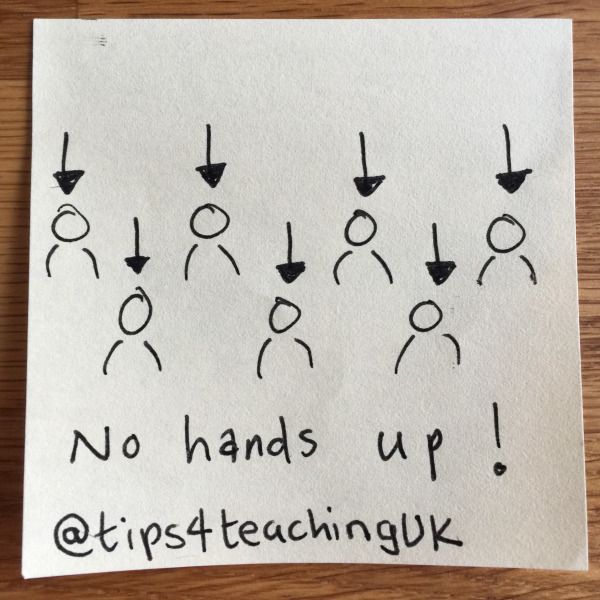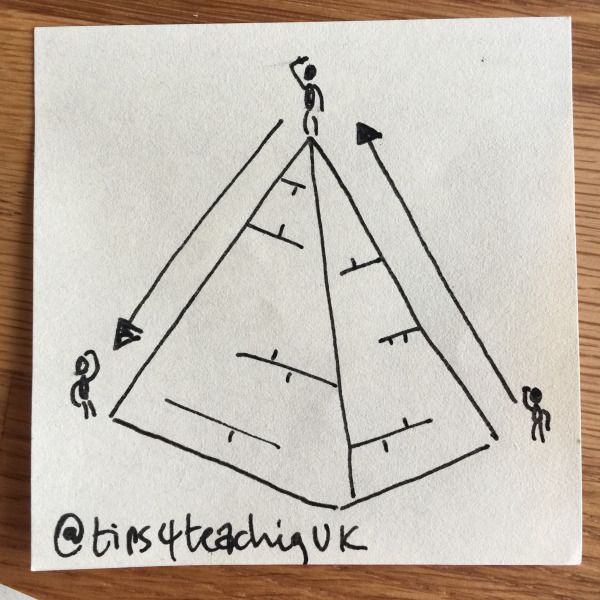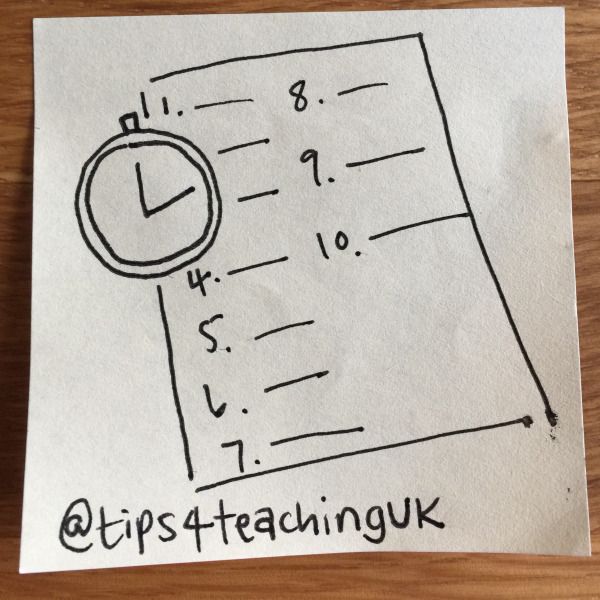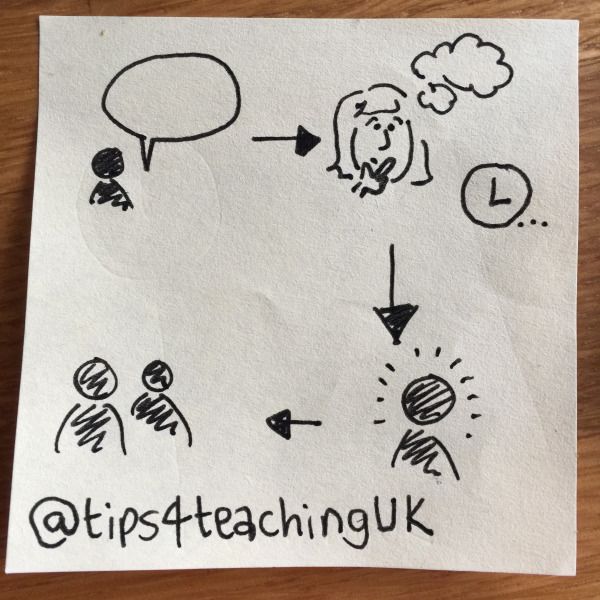
Paul Wright led sessions at Ark’s Teach 2017 conferences in London and Birmingham. He is the author of Teach, Reflect, Doodle and a teacher and Lead Practitioner at a secondary school in Oxfordshire. He launched tips4teaching.co.uk in 2016, using sketch notes to depict areas of CPD and teaching and learning.
Last term I was focusing on improving my own classroom questioning and sharing this with the NQTs in my team. It’s not that I thought my questioning was poor, it’s just that questioning is something I believe is best revisited as often as possible so that it can be fine-tuned.
Here are the top four questioning activities that I used.

No hands up questioning (or ‘cold calling’)
What is it?
Does what it says on the tin. You ask questions but don’t allow students to put up their hands. I ask the question out loud to the whole class before I choose a student to answer it.
Why do this?
By not allowing learners to put up their hands up I was in complete control of who I challenged with questions. Students could be targeted based on the level of challenge I felt they needed. It also gave me an opportunity to engage with certain students. For further reading on this you can check out this blogpost from Doug Lemov, author of Teach Like a Champion.

Pyramid questioning
What is it?
I start by posing a question to one of my lower ability learners and then build on the initial question while I work up to my most able students. The trick is not stopping there. I then make a conscious decision to return the now slightly more challenging questions to less able learners.
Why do this?
It allows me to challenge lower ability learners first, which I find ‘switches them (and others) on’. I then take their answers and carefully question more able learners to build on that answer. Then, instead of ending on what I might think is the best answer I might get, I pause and work my way back through other less able learners. The aim is to allow the second set of learners to give fuller answers than those who went at the very beginning. It really helped me to measure the understanding across a larger number of learners than if I had ‘stopped at the top’.

Starter for ten questioning
What is it?
This is a good way to use questions at the very start of my lessons. I create a set of questions based on a topic already studied. Simply put 10 questions on the board and asked learners to write the number of each question alongside the answer. Make each question more challenging than the one before.
Why do this?
This challenge starts my lessons off in a number of good ways; It makes my expectations about learning clear to my students, and reminds them that it begins the moment they arrive in the room. It also challenges them to recall learning from a previous lesson. This is vital to develop strong knowledge recall skills in learners.

Pose, pause, pounce, bounce
What is it?
A classic! Pose a question to the whole class and then pause for a few moments (the longer the better – get comfortable with that silence). Pounce by choosing a student to answer the question. Don’t stop here, bounce the question on to another student by asking them to add to, build upon or even challenge the answer previously given. This one had fallen out of my routine and so I’m glad I’ve brought it back.
Why do this?
It’s an excellent way to stretch and challenge learners. Research shows that this method engages students and enables them to strengthen their recall ability as well as increase their knowledge wealth. I’ll be continuing this next term for sure! You can read more about pose, pause, pounce, bounce on the Teacher Toolkit website.
You can follow Paul Wright on Twitter: @tips4teachinguk
If you’d like to get regular updates from Ark, our friends and our partners, including teaching tips and best practice, please sign up for our newsletter: arkonline.org/newsletter